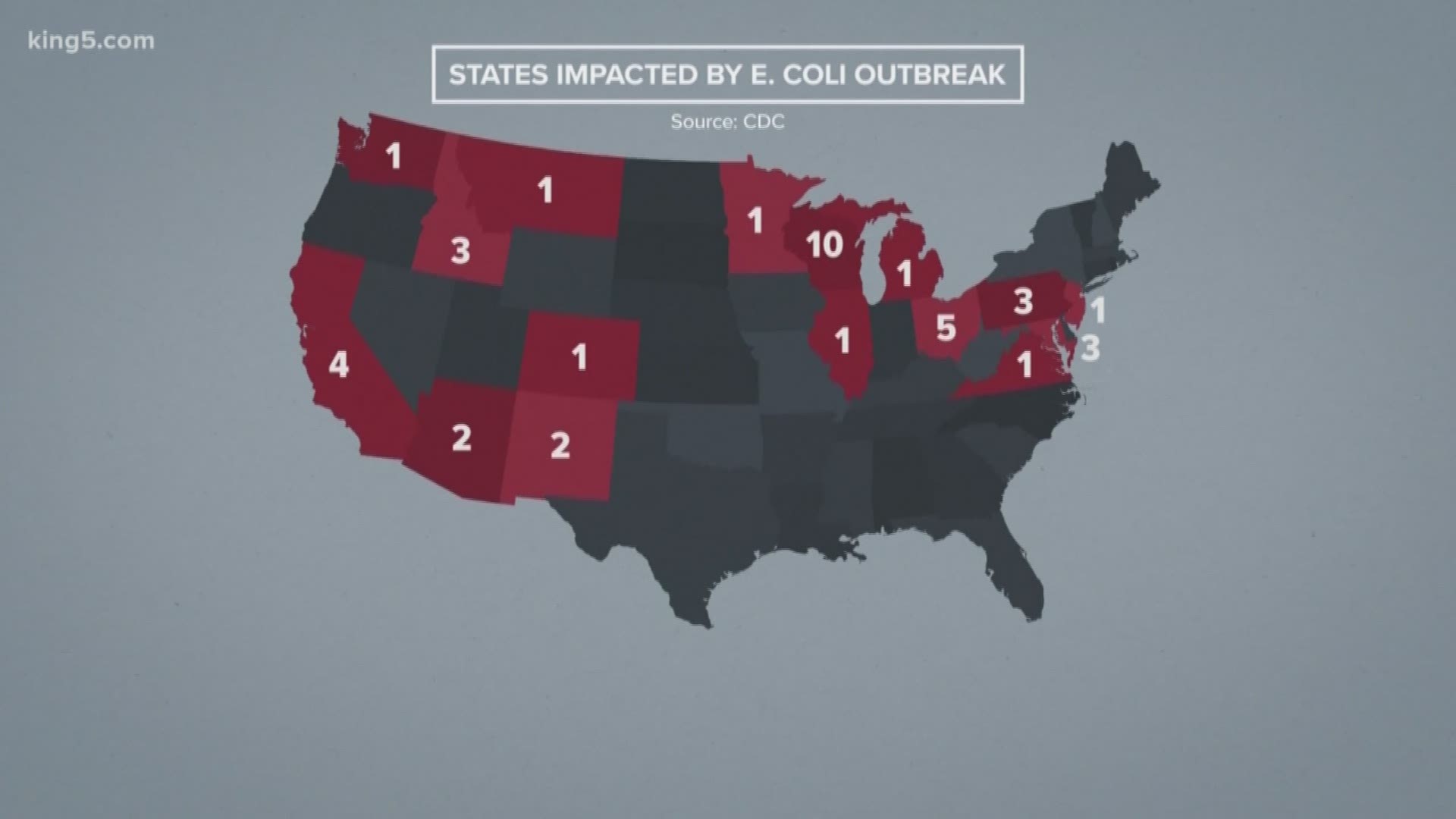A King County resident has been diagnosed with E. coli infection linked to the national outbreak connected to romaine lettuce from the Salinas, California region, according to King County Public Health officials.
The man became ill from eating leafy greens purchased in King County, local health officials said. He was hospitalized but is now recovering.
The U.S. Centers for Disease Control and Prevention announced the outbreak on Friday, Nov. 22. The CDC is telling people to avoid all types of romaine lettuce grown in the Salinas, California area, including whole heads, hearts, and pre-cut salads.
The CDC is also urging restaurants and grocery stores to not sell romaine lettuce unless they know where it was grown.
There have been 40 reported cases of E. coli linked to romaine in 16 states across the country, according to the CDC. There have not been any deaths reported.
King County Public Health officials said they're also investigating additional E. coli cases among King County residents that may "eventually" be linked to the national outbreak, but full information on those cases is still pending.
“We encourage people to follow the CDC guidance and avoid buying or eating romaine lettuce from the Salinas, California growing area to protect yourself and your family,” said Dr. Meagan Kay, DVM, Medical Epidemiologist for Public Health – Seattle & King County. “If you have romaine lettuce at home and you don’t know where it was grown, don’t take chances. Don’t eat it and throw it away.”
The most recent outbreak comes almost exactly one year after a similar outbreak led to a blanket of warning about romaine lettuce.
After last year’s pre-Thanksgiving outbreak tied to romaine, the produce industry agreed to voluntarily label the lettuce with harvest regions. Health officials said that would make it easier to trace romaine and issue more specific public health warnings when outbreaks happen.
Officials never identified exactly how romaine might have become contaminated in past outbreaks. But another outbreak in spring 2018 that sickened more than 200 people and killed five was traced to tainted irrigation water near a cattle lot. (E. coli is found in the feces of animal like cows.)
It’s not clear exactly why romaine keeps popping up in outbreaks, but food safety experts note the popularity of romaine lettuce and the difficulty of eliminating risk for produce grown in open fields and eaten raw.

